Several of Trinidad’s common butterfly species can be found in open gardens and scrubland. They have fewer environmental requirements than other specialised species and this allow them to thrive almost anywhere flowering plants are found. Many common butterflies have acquired local names, some as colourful as the butterflies they represent.
Scarlet Peacock (Anartia amathea amathea)
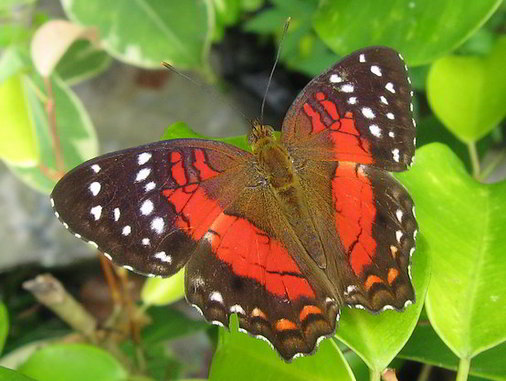
The Scarlet Peacock is perhaps the commonest of Trinidad’s butterflies and is easily identified by its bold red markings and white spots. It can be seen in a wide variety of habitats, ranging from open wasteland to forest edges. The females, while larger, are paler than the males. This butterfly also goes by the name of Red Anartia and by the local name of “Coolie”.
White Peacock (Anartia jatrophae jatrophae)
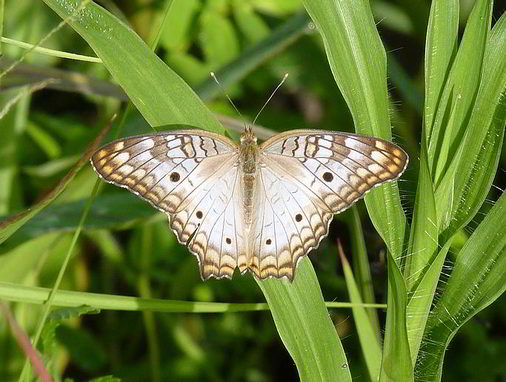
A close relative to the Scarlet Peacock, the White Peacock can be found in similar environments. Additionally, it can be seen in marshland where Scarlet Peacocks tend to be relatively less common. They are pale white with brown markings and have several black spots distributed over the wing. The White Peacock is known locally as the “Biscuit”.
Mangrove Buckeye (Junonia genoveva genoveva)
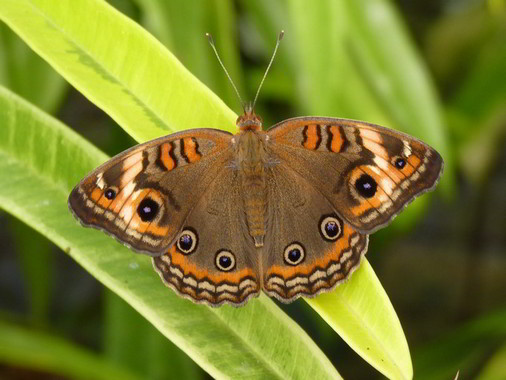
The Mangrove or Caribbean Buckeye is an attractive inhabitant of open areas, forest edges and mangroves. It is generally brown in colour with shades of orange. A striking feature of this butterfly is the large eyespot on the upper side of its wing. This has led to its local name of “Donkey’s Eye”.
White Crescent (Janatella leucodesma)
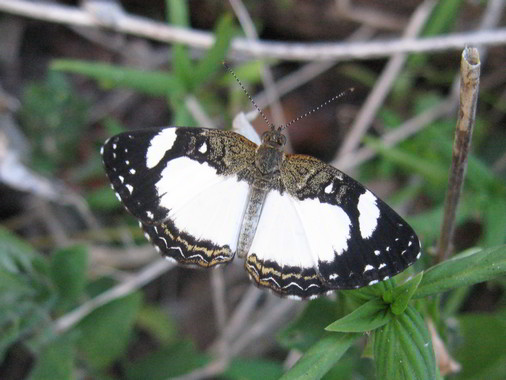
The White Crescent is often seen flying in open areas seeking both flowers and sunlight. Bold white and black markings allow for this butterfly to be easily identified in flight. It is also know by the local name of “Handkerchief”.
Ruby-spotted Swallowtail (Parides anchisiades)
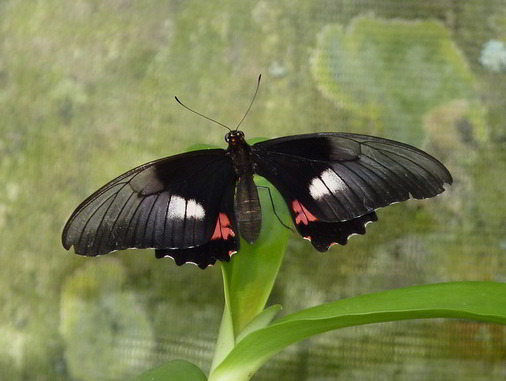
This large butterfly is commonly seen feeding at the flowers of Hibiscus and Ixora. Due to its rapid movement in flight, it is difficult to appreciate the jet black wings and large pink spot on the lower wing. Occasionally one might be found resting with its wings held open (as pictured).
Dirce Beauty (Colobura dirce dirce)
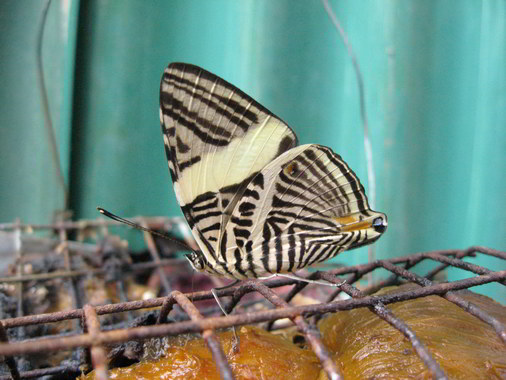
The Zebra is most often encountered resting on a tree trunk in a characteristic head down position. The underside of its wing has a cryptic pattern which provides a measure of camouflage. When open, the upper side of its wings reveal a very different pattern, consisting of a creamy yellow band crossing its otherwise plain brown wing. It is fond of ripe fruit. It goes by several names including the Zebra, White Admiral and the Mosaic.
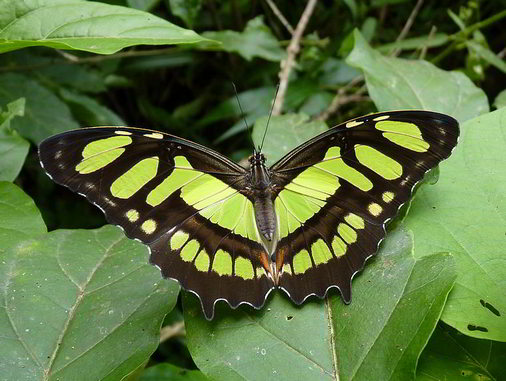
This large butterfly has a stunning green and dark brown pattern on its wings. It feeds both on the nectar of flowers and the juices of ripe fruit. It is more likely to be seen in well vegetated areas than in open land.
Variable Cracker (Hamadryas feronia farinulenta)
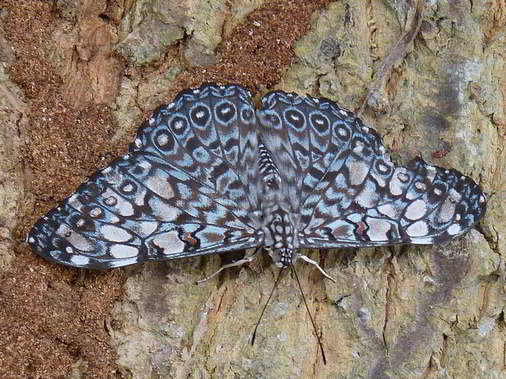
The Cracker is often found resting on tree trunks with its wings opened, where its white and grey mottled colouring serves as camouflage. It gets its name from the snapping sound that it makes when in flight, usually when in the presence of another Cracker. This often occurs when the butterflies congregate to feed at ripe fruit.
Banded Banner (Pyrrhogyra neaerea neaerea)
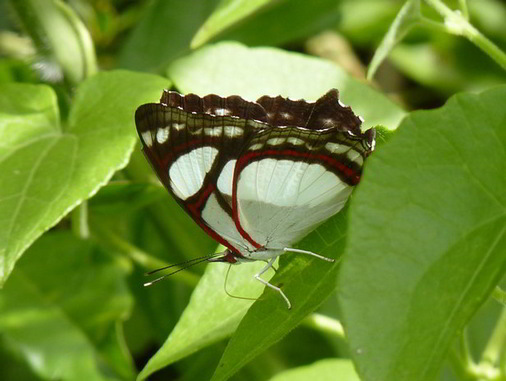
The Banded Banner is a common inhabitant of well vegetated areas. It is often difficult to observe as it is quite wary and often rests on the underside of leaves. It is black with white blotches. It is also known as the “Pyrrhogyra”.
